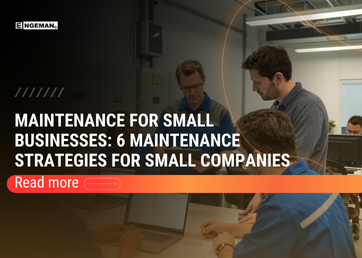Contents
What are Education and Training?
In the Education and Training pillar, training and qualification of employees are performed in the workplace itself. These trainings need to be related to the tasks that operators perform daily and to the use of materials and equipment necessary for the development of their activities. It is also structured through specific problems in employee training that are causing, for example, a reduction in quality, productivity, rework, or machine breakdown.
This pillar is similar to the first one, Autonomous Maintenance, since it is related to the training of employees. While the first pillar focuses on helping with maintenance, the Education and Training pillar has its objective directed at the employee’s work itself.
What is the objective of the Education and Training Pillar?
In this pillar, training activities that are performed have the objective of preparing operators and enabling them, covering all knowledge failures that may exist in the team and that are important for the company’s projects, and thus ensuring the results proposed by the TPM methodology.
To identify the characteristics of your team and direct qualification and training, the Skills Matrix was used. With this matrix, the company can track all the skills that employees already have and those that are essential for executing certain activities, and it can also relate the problems that are happening to the lack of operator training. But after all, what is the Skills Matrix?
Skills Matrix
For a successful Total Productive Maintenance (TPM) deployment, operators and maintainers must have the skills to know how to detect and solve the day-to-day problems of the maintenance department. In order for these skills to be mapped and assigned according to maintainers, the Skills Matrix is used.
Skills Matrix is a tool used to map out what skills are needed for a project or team. Through it, it is possible to view all the skills and competencies that a team has or even check if any are being wasted.
An advantage of using the skills matrix is that you can view your team’s strengths and weaknesses in a more didactic way. But what is the importance of this matrix in the Education and Training pillar? Using the Skills Matrix, managers have a broader view of how their operators are qualifying. For future projects, for example, the company can already get ahead of the curve in training employees.
How do I implement the Education and Training Pillar in my company?
Regardless of this pillar, training employees is always a strategy for those companies that want to highlight the skills of their employees. This practice is reflected in the quality of its products and the increase in the lifespan of its equipment, for example. Having an employee who knows the equipment and can operate it correctly and safely will generate an increase in the machine’s availability, which will generate more profitability for the company.
The use of Education and Training pillar will develop activities that will generate better results for the company every day. The deployment of this pillar can be done through some of the Skills Matrix actions, as follows:
Define the ideal profile for operators and maintainers
Before starting the training, the company needs to be very clear about the skills that are necessary for the projects and/or functions that it has in progress or that are in planning. A survey of problems that are still happening due to the lack of employee training is also important to define and direct training actions.
Evaluate your current team to define the knowledge level
At this point, evaluate your team to attest to the skills and competence of your operators. This evaluation can be done according to manager decisions, either through a questionnaire, certificates, and licenses, or even through the application of evaluations directed to the specific requirements of each department. This way, you will have all the information and know what skills are needed, or you can identify employees who are already trained and see that their skills are being wasted.
Create a plan to develop your employees’ skills
Once you’ve defined your skills and evaluated your team, you will have all the information you need about your company’s or department’s situation. From there, you can develop a plan to start developing the skills that your company needs according to the demands raised earlier.
Deploy a training environment
Once you create the plan, it is time to put it into practice. Organize training in the same workplace with trained people, whether managers, maintainers, or other professionals who have mastery of the subject. Plan so that this training does not compromise the availability of your production and that it helps your operator or maintainer develop the skills required in the training plan.
Evaluate activities for future trainings
After all the training, analyze the entire process and observe the impacts it has brought to your company. Collect data and observe the results so that you can use this data in future training and thus ensure TPM continuity with the objective of zero failures and maximum equipment availability.
Conclusion
With the constant technological advances, professional training has become an essential practice for companies that want to remain more competitive on the market. Well-prepared and up-to-date employees will contribute to the company’s increased productivity and a safer work environment.
For these trainings, the Education and Training pillar, together with the practices performed in the Autonomous Maintenance, Planned Maintenance, and Specific Improvements pillars, becomes an important tool for the success of total productive maintenance. In this way, it is possible to see the involvement of all teams in a single direction, avoid breakdowns, and increase equipment availability.
So, does your company practice the Education and Training of its employees? Keep following our TPM pillars series! In the next article of the series, we will talk about Safety, Environment, and Health (SHE). See you there!




